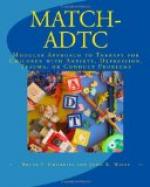The best life for humanity is that which is, on the whole, felt best; not necessarily that which is judged best by this man or that, for our judgments are narrow and misrepresent actual values,-but that which has had from beginning to end the greatest total of happiness. No other ultimate criterion for conduct can ever justify itself, and most theoretical statements reduce to this. To be virtuous is to be a virtuoso in life. All sorts of objections have been raised to this simple, and apparently pagan, way of stating the case; they will be considered in due time. The reader is asked to refrain from parting company with the writer, if his prejudices are aroused, until the consonance of this sketchy account of the basis of morality with Christianity and all idealism can be demonstrated.
H. Spencer, Data of Ethics, chap. III. S. E. Mezes, Ethics, chap ix. Leslie Stephen, Science of Ethics, chaps. II, ix. F. Thilly, Introduction to Ethics, chaps. IV, V. F. Paulsen, book ii, chap. I. J. S. Mill, Utilitarianism. B. P. Bowne, Principles of Ethics, chap. II. The classic accounts of a rational foundation of ethics are to be found by the discerning reader in Plato’s Protagoras, Gorgias, and Republic (esp. books. I, ii, iv), and Aristotle’s Ethics (esp. books. I and ii). For refinements in the definition of right and wrong, see G. E. Moore, Ethics, chaps. I-V; B. Russell, Philosophical Essays, I, secs. II, iii. International Journal of Ethics, vol. 24, p. 293. Definitions of value without reference to pleasure or pain will be found in Journal of Philosophy, Psychology, and Scientific Methods, vol. II, pp. 29, 113, 141. An elaborate and careful discussion will be found in G. H. Palmer’s Nature of Goodness.




